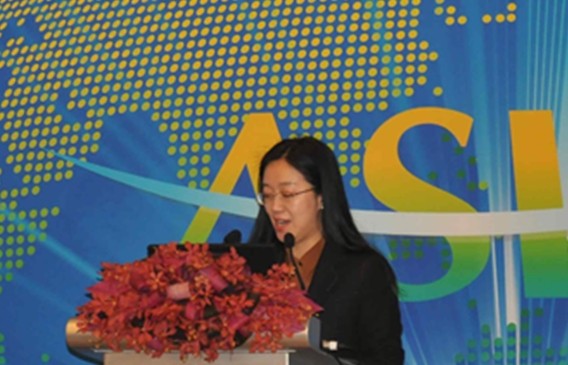

BFA released the Boao Forum for Asia Development of Emerging Economies 2014 Annual Report on March 26, 2014. BFA
In 2010, BFA began releasing the annual report on the development of emerging economies and for the first time defined E11 (emerging 11 countries). E11 refers to the 11 emerging economies in G20, including Argentina, Brazil, China, India, Indonesia, South Korea, Mexico, Russia, Saudi Arabia, South Africa, and Turkey.
E11 keeping on leading world economic growth, China's growth speed firmly ranking first
According to the report, against the background of a generally slowing down world economy in 2013, the economy of E11 maintained its growth momentum and offered boost to world economic recovery. IMF data show that in 2013, the economic growth rate of E11 was 5.1%, up by 0.1% over the previous year. Such growth rate is 0.4% higher than 4.7%, the economic growth rate of the emerging markets and developing economies in 2013, and 3.8% higher than 1.3%, the economic growth rate of the developed economies.
Although E11 as a whole enjoys steady economic growth, different economies perform differently. IMF estimates show that in 2013, Turkey, Argentina, Brazil, India, and South Korea enjoyed better growth momentum than the previous year. Their growth rates were 3.8%, 3.5%, 2.3%, 4.4%, and 2.8%, respectively, up by 1.6%, 1.6%, 1.3%, 1.2%, and 0.8%. On the other hand, Mexico, Russia, and Saudi Arabia suffered relatively large economic downturn. In 2013, their economic growth rates were 1.2%, 1.5%, and 3.6%, respectively, down by 2.5%, 1.9%, and 1.5%. Chinese economy secured a growth rate of 7.7%, remaining at the leading position among E11.
Internal economic ties among E11 keeping on increasing, on the other hand, their trade connection with major developed economies showing a downward trend
The report points out that in foreign economic cooperation, E11 have closer and closer internal ties and their economic and trade connection with major developed economies show many new characteristics. In trade, the internal trade connection among E11 is generally increasing by days. However, their trade connection with major developed economies shows a downward trend. In recent years, the stronger internal trade ties among E11 are seen in the continuously growing proportion of their internal trade volume to their total foreign trade volume. In 2012, the internal trade volume of E11 accounted for 24.23% of their total foreign trade volume, up by 0.38% over the previous year. In 2013, such proportion will hopefully continue rising to 24.50%. On the contrary, the importance of the developed economies in E11's foreign trade continues declining. In 2012, the trade volume between E11 and the eight developed economies, including G7 and Australia, accounted for 33.69% of E11's total foreign trade volume, continuing the downward trend of the previous year and down by 17.89% over 2001, in which the proportion was over 50%. According to preliminary estimation, the proportion will continue dropping to 32.40% in 2013. In direct foreign investment, the internal investment cooperation among E11 has been deepening. The FDI two-way flow trend between E11 and major developed economies becomes stronger and stronger. In financial cooperation, E11 are even more active. In particular, the BRIC countries in E11 have played a leading role in promoting foreign financial cooperation among emerging economies.
Growth of emerging economies to generally slow down in 2014
Based on the current basic economic conditions of E11, signs of their development trend, and the description and analysis of their overall economic operation in 2013, the report holds that E11's economy will be on a tortuous recovery track in 2014. The report points out that the developed economies' adjustment of their currency policies and its spillover effect will be one of the important factors influencing E11's macroeconomic operation in 2014. Since January 2014, USFRB has officially implemented the Taper Plan. Although the market has long been anticipating the adjustment of the US currency policy and it will be a gradual process for the US to reduce asset purchase, the spillover effect of such currency policy adjustment can still hardly be estimated. A likely result is a massive outflow of short-term capital from emerging market countries, which will in turn add uncertainty to E11's economy. In particular, for the E11 countries that often have large account deficits, high proportion of short-term foreign debts, unbalanced internal balance sheets, and a high level of opening up, they are more vulnerable to the abnormal maneuver of foreign capital. Moreover, the governments of some E11 countries have experienced an accelerated expenditure expansion and a consequent shrinking space for financial policy. Compared with the developed economies, the emerging economies have only limited capability and means to deal with their debts. They are more vulnerable and less capable of repairing their national balance sheets. If their financial and debt conditions deteriorate, it is highly likely to trigger social unrest within these countries.
In a word, in 2014, it is more likely that the economic growth of E11 will slightly drop compared with the growth in 2013. It may maintain at 4.9% calculated based on the purchasing power parity.
Source: boaoforum.org
Copyright ©1999-2018
Chinanews.com. All rights reserved.
Reproduction in whole or in part without permission is prohibited.